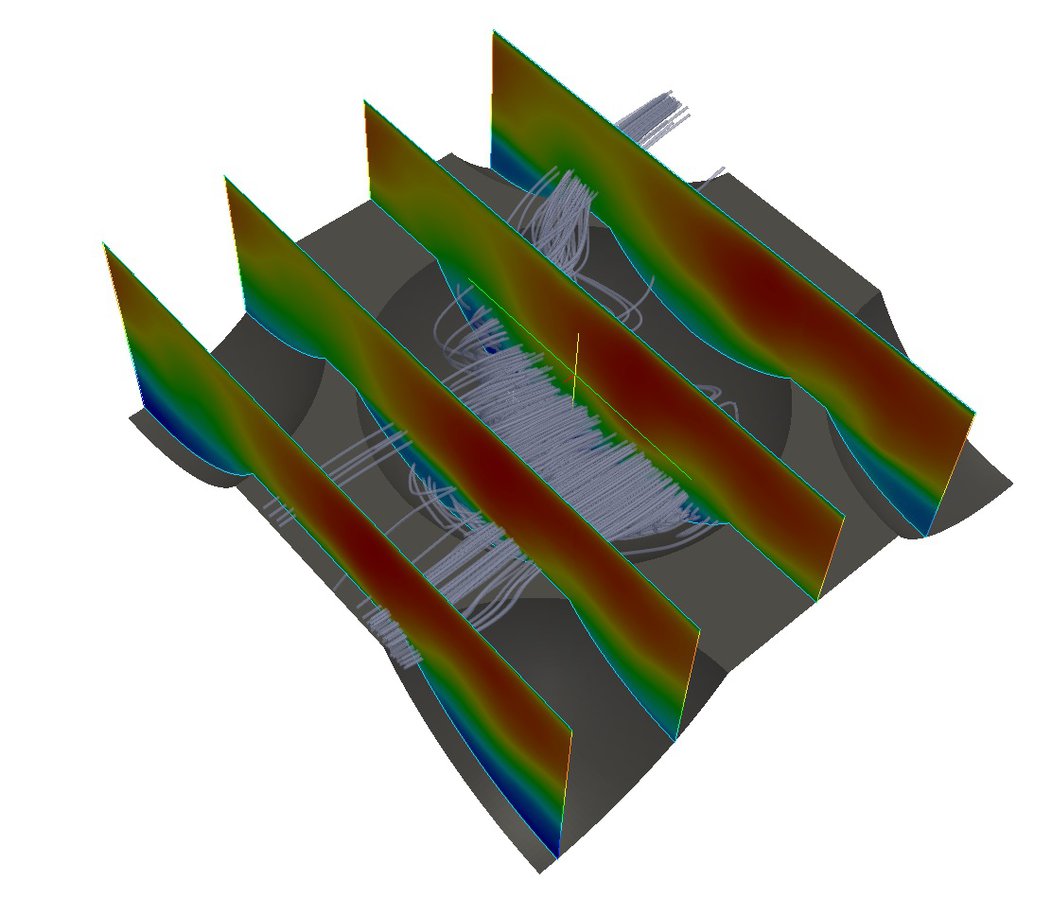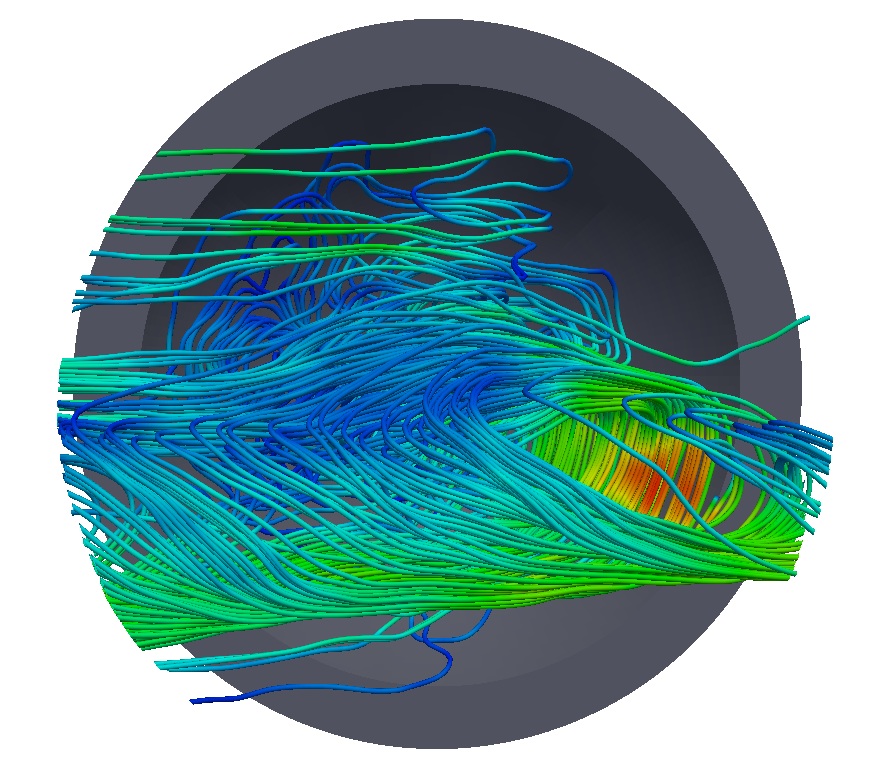Numerische Berechnung von Strömungsstrukturen und Wärmeübergang auf Dellenoberflächen
The aim of this study is to clarify the development and impact on heat transfer of vortex formations inside dimples using experimental and numerical technique's.
In case of using dimples as turbulators the hydrodynamic and thermodynamic properties of heat exchangers become optimal in comparison with other heat transfer enhancement methods like ribs and fins. Especially with respect to the pressure loss this innovative cooling method shows major advantage as compared with existing conventional methods. The structure of vortices created within dimples remains not quite clear especially when the flow is highly unsteady at large depth to diameter ratio of the dimple. Large Eddy Simulation technique is used for numerical investigation of vortex formations inside dimples where large attention is being paid to the unsteady effects inside the dimples dimple. In LES a time resolved temperature and velocity fields are obtained which show characteristic evolution stages of vortex formations for a large range of Reynolds numbers up to Re_D = 40000. LES results reveal the formation of asymmetric structures which are instantaneous and change the angle of outbursts from α= 45° to α=-45°. The vortex structure inside of the dimple changes steadily its orientation causing the long period oscillations with opposite-of-phase motion. Frequency analysis performed on the base of LES calculations allows to determine the presence of two dominating frequencies each of which corresponds to a certain vortex structure. Moreover these structures are studied through the use of the proper orthogonal decomposition (POD) proposed by Sirovich. POD Modes of the velocity look like a "tornado" taking its origin inside the dimple and penetrating into the channel. This structure can be interpreted as tornado like jet structure or the so called mono cell vortex structure. Further the iso-surfaces for the POD modes of the pressure field indicate the large scale structures arising in the shear flow separating the main flow and recirculation zone. In contrast to the velocity POD modes the pressure modes occur almost symmetric with respect to the plane in the center of the dimple in flow direction. By using POD method it is possible to get a deep insight into flow structure inside dimples. For further investigations the structures gained from LES calculations are analyzed using lambda_2 and Q criteria.


